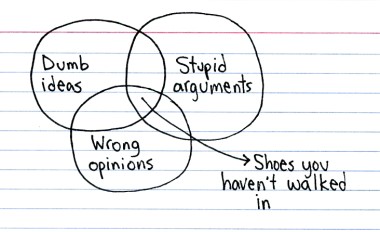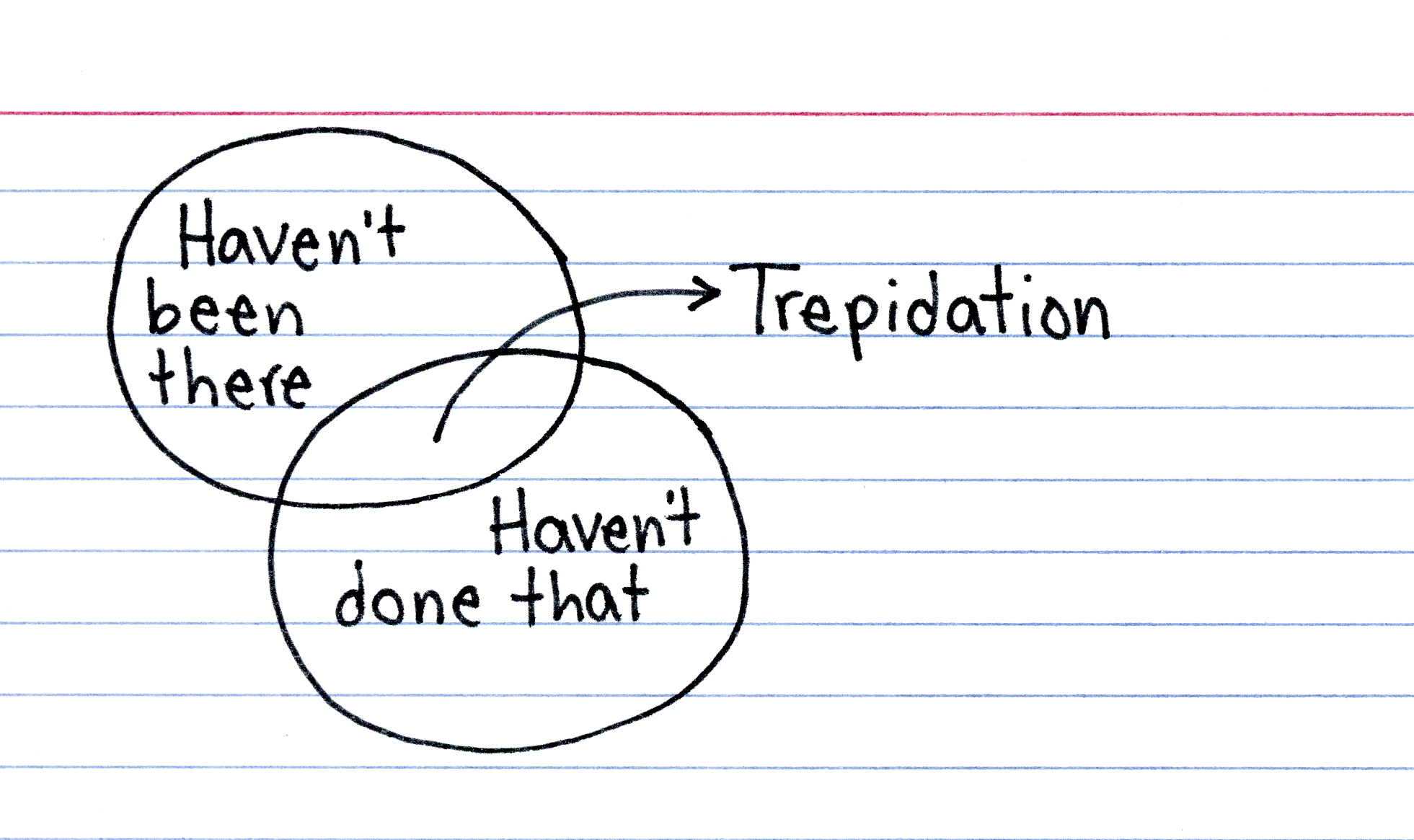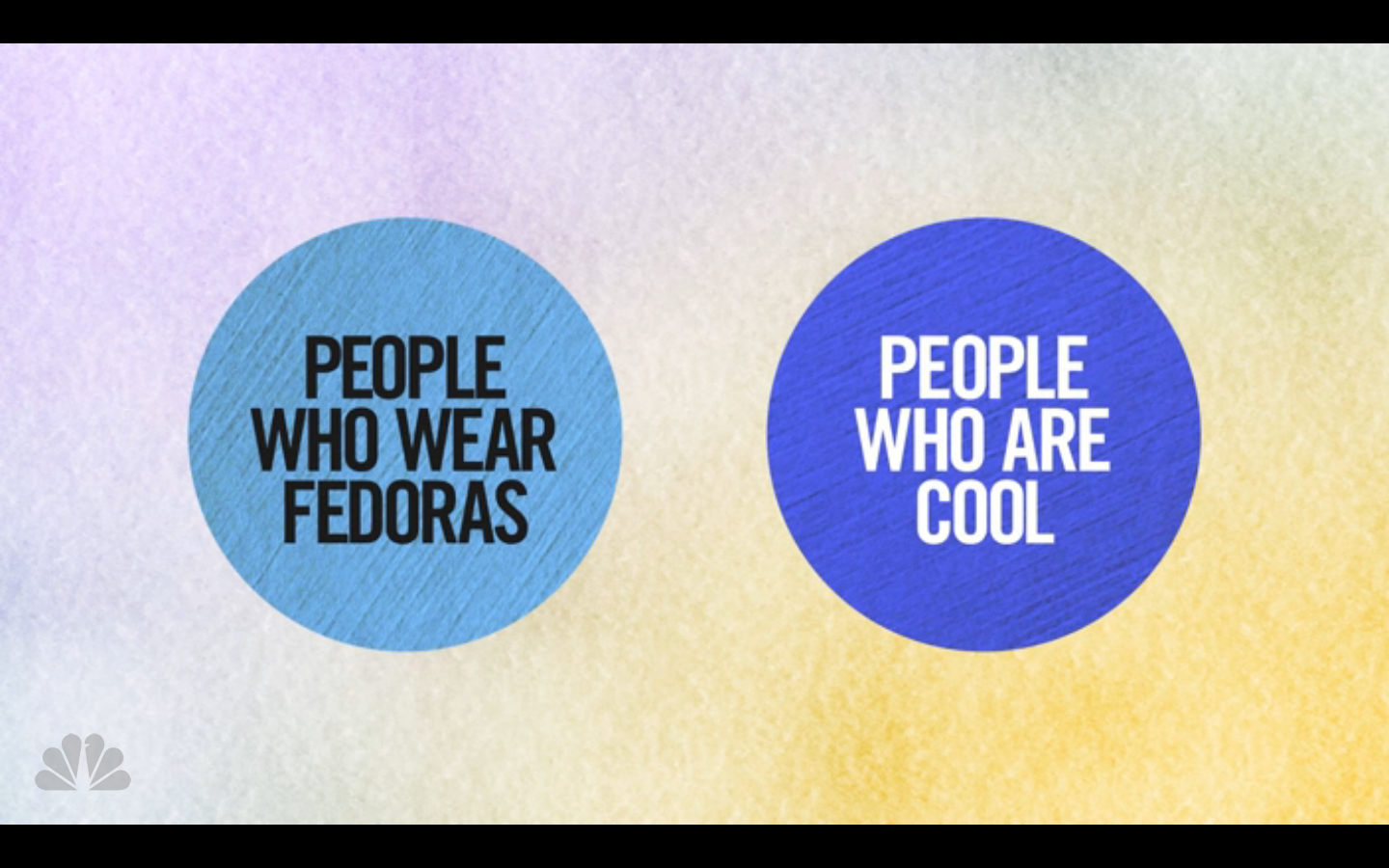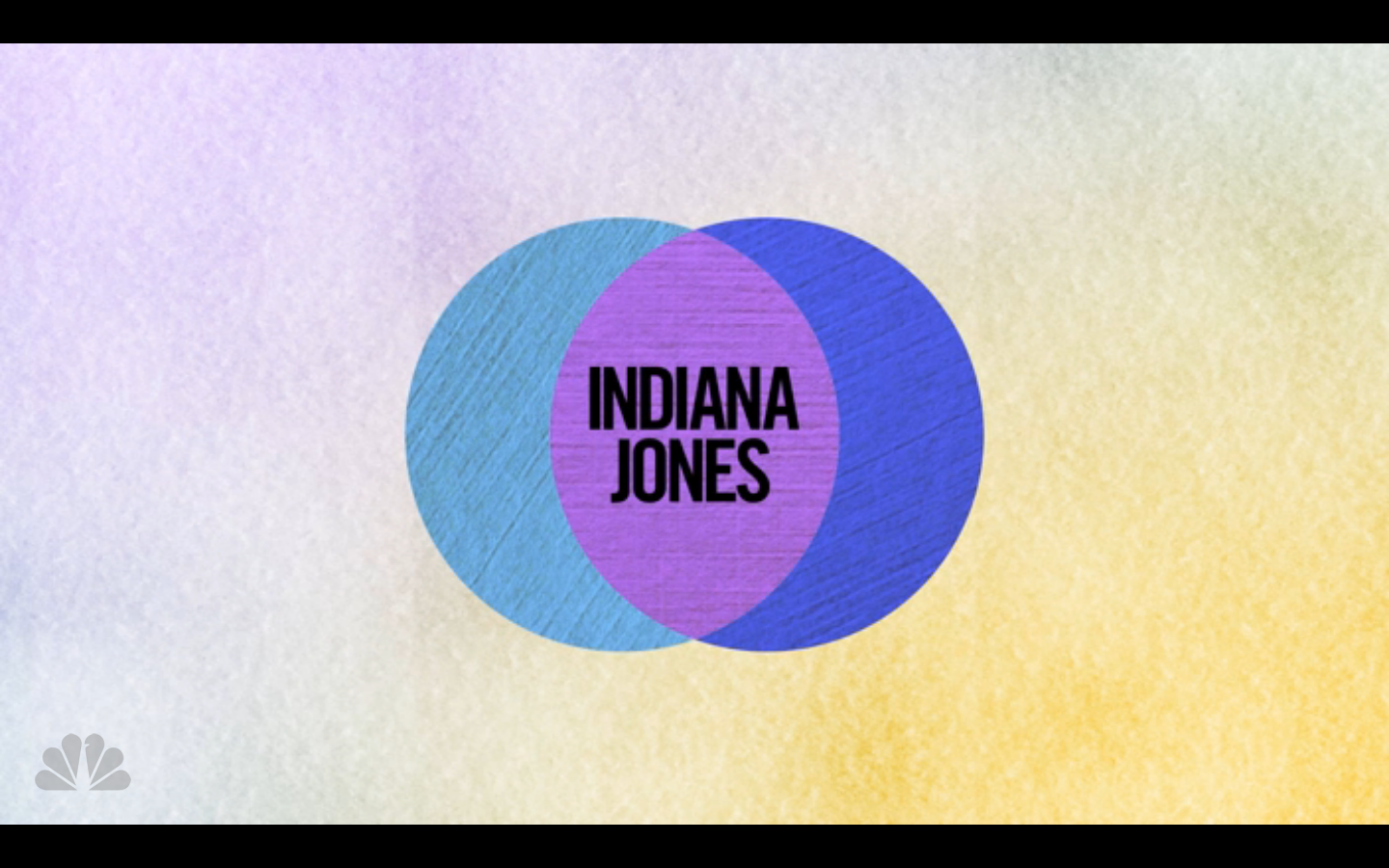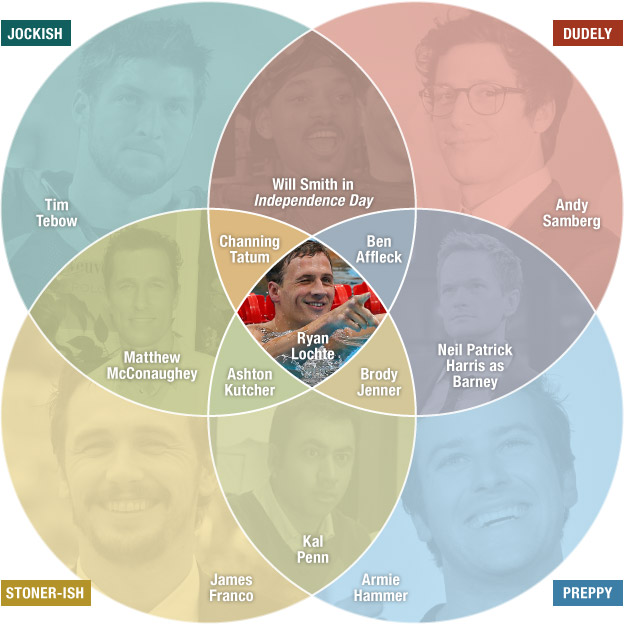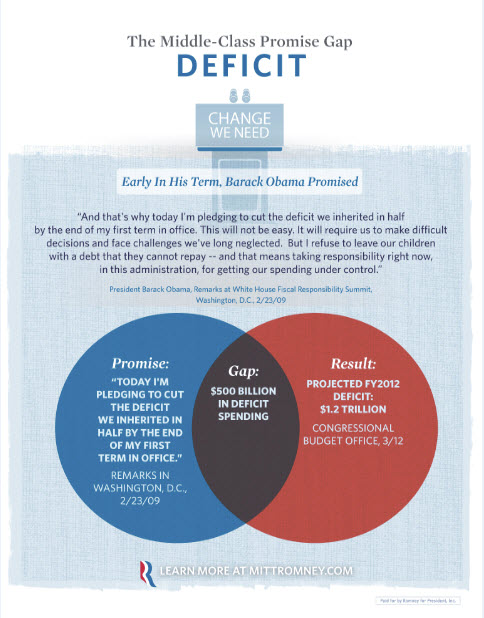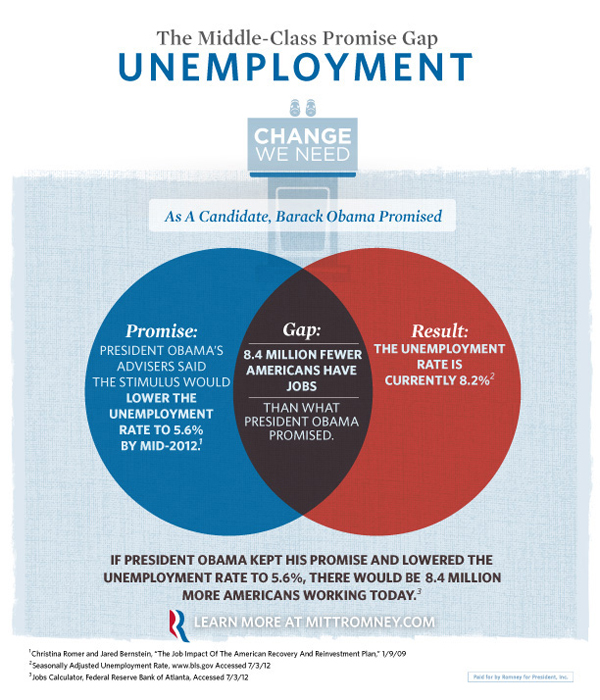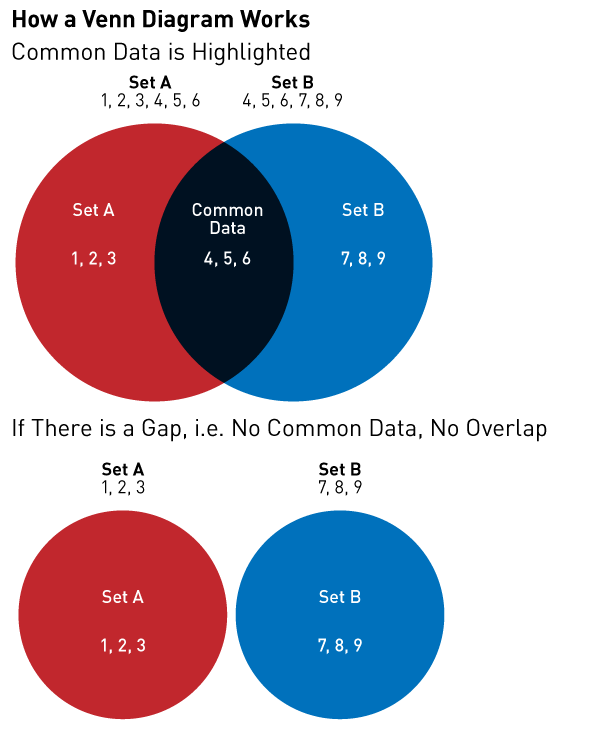Well the election is finally over. And since last week I used my Friday post to talk about something serious, I apologise for backtracking just a wee bit to go back to the election.
This summer I had a discussion with one of the designers I worked with at the time, Ciana Frenze. We were sitting out in the Art Institute garden with a few other designers where she was explaining Harry Potter’s sorting hat to me—I know nothing about Harry Potter. I never thought that knowing the defining characteristics of the various houses would come in handy, especially given my interest in politics and data. But today’s piece fits rather well.
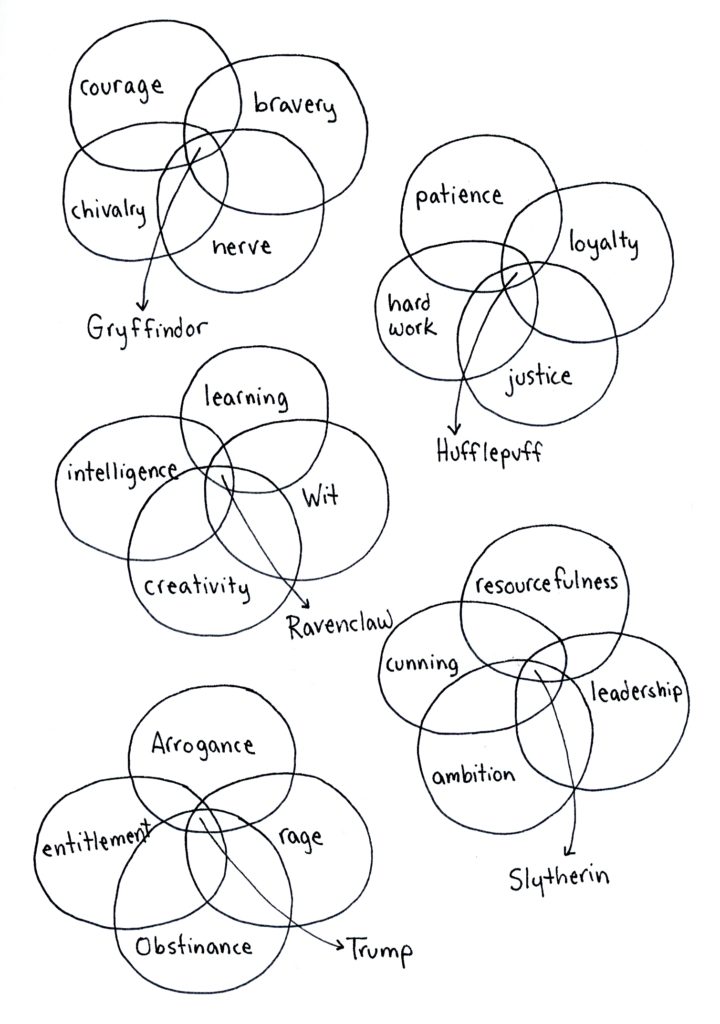
Credit for the piece goes to Jessica Hagy.

